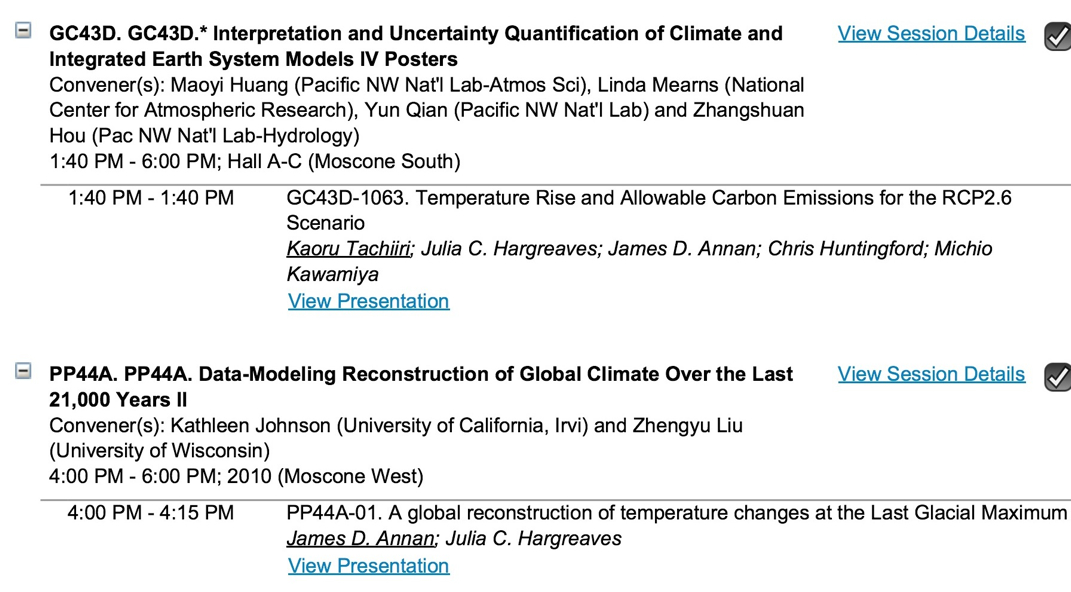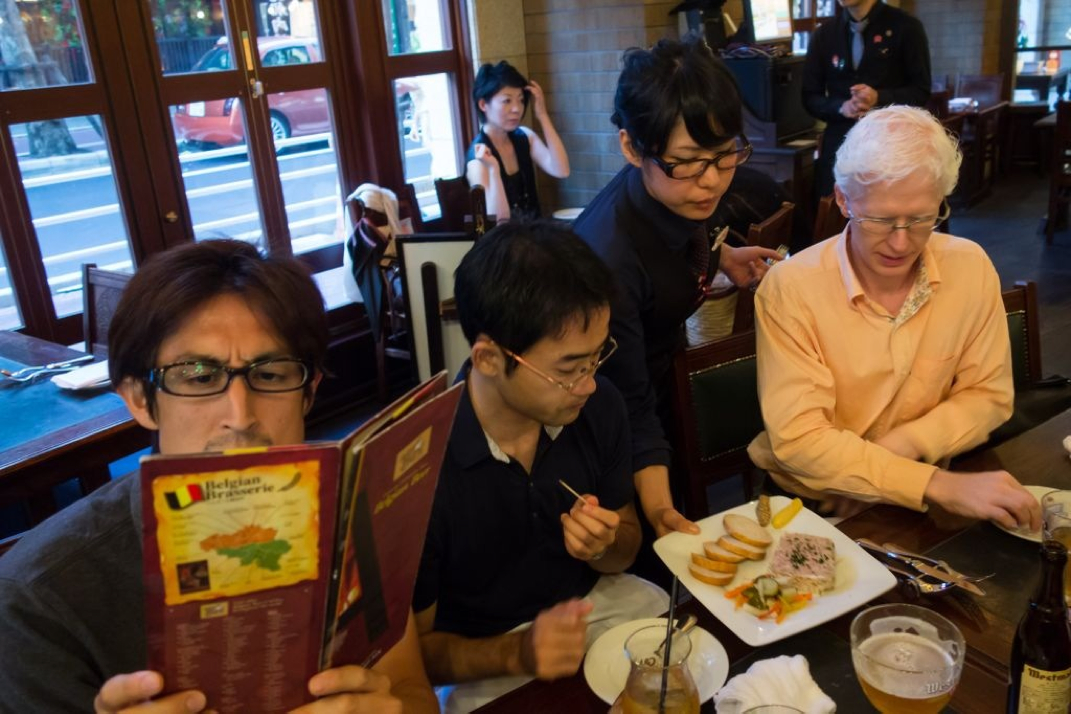A slide from one of the 6 scientists we invited to JAMSTEC in March to discuss issues related to the study of uncertainty and risk related to climte change.
After three debates, a series of oral sessions and a poster session (program here). A number of conclusions were drawn, focussed around the general theme of how to make our science more useful to society.
Two-way communication
In order for impact assessment to be of greater value, it is important to emphasise genuine two-way interaction between stake holders and scientists. The "linear model" in which scientific results trickle down to end-users will not result in effective generation or use of information.
Time scales of change
The time scale of the climate change is an important factor in evaluating the risk. From a societal point of view, assessment of the time scale and size of a climate change or risk from climate change, and indeed the time scale required to avert the risk, are more important than the dynamical characteristics of the underlying process (i.e. whether the process is linear, nonlinear or even a threshold-induced bifurcation).
Usefulness of paleoclimate
Our only evidence of rapid and substantial climate changes comes from the past and thus the paleoclimate record potentially provides a key to assessing the possibility and perhaps probability of rapid climate change in the future. Many challenges remain for both the paleo models and the data, but present evidence points to the current climate models having serious limitations in reproducing such rapid past changes. One plausible consequence of this is that purely model-based projections may also under predict the likelihood of future abrupt changes.
Communicating probabilstic predictions
When researchers generate probabilistic predictions, it is important that they endeavour to realistically represent their uncertainty, especially when their results are based on a set of dubious (but convenient) underlying assumptions. Probabilistic ensembles derived from single models appear to be limited in terms of their qualitative range of behaviours compared to those from the multi-model ensembles. However, as indicated in the previous point, multi-model ensembles still potentially have common biases and limitations, the consideration of which should be included when making probabilistic statements.
After three debates, a series of oral sessions and a poster session (program here). A number of conclusions were drawn, focussed around the general theme of how to make our science more useful to society.
Two-way communication
In order for impact assessment to be of greater value, it is important to emphasise genuine two-way interaction between stake holders and scientists. The "linear model" in which scientific results trickle down to end-users will not result in effective generation or use of information.
Time scales of change
The time scale of the climate change is an important factor in evaluating the risk. From a societal point of view, assessment of the time scale and size of a climate change or risk from climate change, and indeed the time scale required to avert the risk, are more important than the dynamical characteristics of the underlying process (i.e. whether the process is linear, nonlinear or even a threshold-induced bifurcation).
Usefulness of paleoclimate
Our only evidence of rapid and substantial climate changes comes from the past and thus the paleoclimate record potentially provides a key to assessing the possibility and perhaps probability of rapid climate change in the future. Many challenges remain for both the paleo models and the data, but present evidence points to the current climate models having serious limitations in reproducing such rapid past changes. One plausible consequence of this is that purely model-based projections may also under predict the likelihood of future abrupt changes.
Communicating probabilstic predictions
When researchers generate probabilistic predictions, it is important that they endeavour to realistically represent their uncertainty, especially when their results are based on a set of dubious (but convenient) underlying assumptions. Probabilistic ensembles derived from single models appear to be limited in terms of their qualitative range of behaviours compared to those from the multi-model ensembles. However, as indicated in the previous point, multi-model ensembles still potentially have common biases and limitations, the consideration of which should be included when making probabilistic statements.








 RSS Feed
RSS Feed